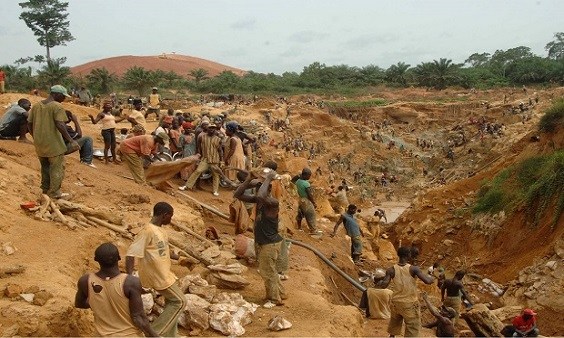Empowering youth to transition from galamsey to entrepreneurship
In recent years, galamsey (illegal small-scale mining) has pulled thousands of Ghanaian adolescents into a dangerous line of work, driven by economic hardship and a lack of viable alternatives.
While galamsey may provide an instant financial advantage, the long-term consequences—environmental degradation, health problems, and legal risks—are severe.
But there is hope. With the right coaching, tools, and incentive, the same enthusiasm and determination that the kids bring to galamsey may be channelled into entrepreneurship, producing a more sustainable and legally sound income. This article looks at practical procedures for moving from galamsey to launching a business.
Understanding the impact on youth and community
Galamsey is a high-risk, low-reward business that frequently produces negative social, health and environmental consequences. Youth engaging in galamsey are exposed to toxic compounds such as mercury, which can lead to long-term health problems.
Furthermore, the environmental damage deforestation, soil erosion, and water contamination endangers the very land that communities rely on for agriculture and clean water.
Despite these risks, the need for quick money keeps many young people stuck in the loop. A change to entrepreneurship offers not just personal benefits, but also a means of protecting local ecosystems and community well-being.
Identifying transferable skills
Many skills developed in galamsey operations can be used in legal, formal company undertakings. Working in the mining industry, for example, requires physical endurance, problem-solving skills and a basic understanding of logistics.
These talents can be used to do business in agriculture, construction, transportation and other industries. The youth can build on their resilience and work ethic by learning how to manage resources, overcome risks and pursue long-term advancement in legal sectors.
Exploring viable business ideas
Galamsey participants can pursue a variety of business initiatives based on their geography and interests. Here are some company concepts that provide sustainable alternatives:
Given the considerable damage caused by galamsey to local farmlands, the youth could participate in agribusiness by producing crops, rearing animals, or raising poultry.
Organic farming is gaining popularity around the world and has the potential to be a profitable operation, particularly as demand for ecologically friendly products increases.
The mining industry’s need for tools and equipment can easily be translated into crafts such as welding, carpentry and masonry. These enterprises can help meet the increased demand for infrastructure in both rural and urban locations.
Education and training as a foundation
One of the first steps in switching from galamsey to entrepreneurship is to get the required business skills. Youth can benefit from training programmes, workshops, and mentorship provided by government agencies, non-governmental organisations, and commercial businesses.
Institutions such as the National Board for Small Scale Industries (NBSSI) and initiatives such as the National Entrepreneurship and Innovation Plan (NEIP) provide financial literacy, business development and funding assistance to young entrepreneurs.
Additionally, technical and vocational education can provide the skills required to enter industries such as agriculture, manufacturing and services.
Leveraging support networks and funding
Entrepreneurship may be a daunting experience, especially when starting from scratch. However, there are several assistance systems accessible. Government initiatives, non-governmental organisations (NGOs), and private investors are increasingly recognising the value of youth-led enterprises.
Programmes such as Youth Enterprise Support (YES) and Masloc provide loans and grants to young entrepreneurs. Furthermore, local banks are rapidly giving flexible financing choices geared to new firms. Mentorship and networking opportunities are just as vital as financial help.
Young entrepreneurs can locate mentors through business associations, community leaders, or successful business owners who have gone before them.
These mentors can provide advice on how to overcome the hurdles of launching a business, entering new markets and managing funds.
Conclusion
The transition from galamsey to entrepreneurship is difficult, but it is critical for the long-term well-being of Ghana’s youth and the country’s future.
By embracing entrepreneurship, the youth can avoid the environmental and health concerns connected with illicit mining while also contributing to the country’s economic development.
With access to education, money, mentorship and a commitment to innovation, young people may realise their full potential and build thriving enterprises that promote sustainability and community development.
This shift not only provides economic benefits, but it also protects the environment for future generations.
The government, corporate sector, and communities must collaborate to offer the resources and support that young entrepreneurs require to make the important transition from galamsey to sustainable enterprise.



